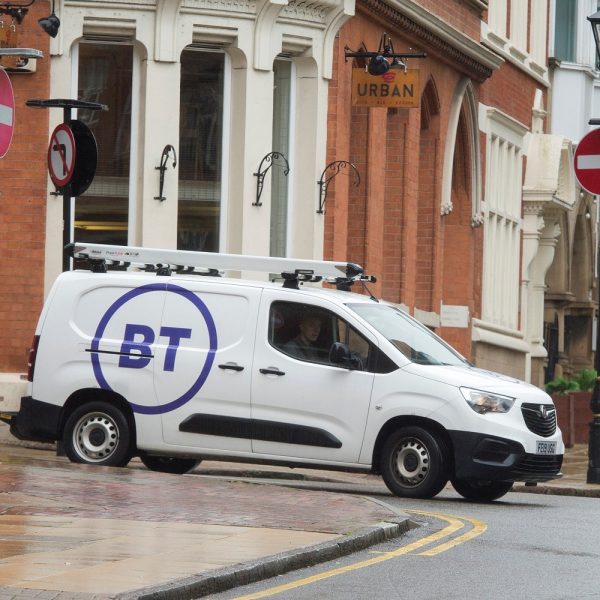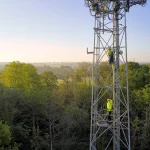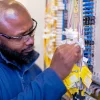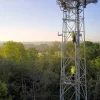BT Stabilises UK FTTP Broadband Build – Adds 718,000 Premises

The BT Group has published a rather limited Q1 FY24 (quarterly) trading update to June 2023, which includes very few of the usual details but does reveal that Openreach’s roll-out of a full fibre (FTTP) broadband ISP network (coverage) grew by 718,000 UK premises in Q1 to total 11 million (up from 702k last quarter).
In case anybody was wondering, back in May 2023 BT adopted a different approach to their quarterly results and – for Q1 and Q3 – they will now only be publishing a much shorter trading update (roughly in-line with most FTSE 100 companies). There will also be no investor calls or any of the usual engagement, thus we only get a very limited summary. In other words, the big details will come in Q2 and Q4.
However, it’s worth remembering that Openreach’s FTTP build suffered a slowdown last quarter, which followed a cost-cutting drive in their build plan, and this update sees somewhat of a stabilisation (i.e. it hasn’t got any slower and actually picked up a little bit). Since there isn’t much to report this time, then we’ll just highlight the most interesting bullet points below.
Advertisement
The customer take-up rate of Openreach’s FTTP broadband lines has also increased again, jumping from the already impressive level of 30.4% last quarter and reaching 32% this time. The rapid roll-out of a new network almost always tends to suppress the take-up figure, thus they’re doing well to buck that trend – all despite an increasingly significant amount of competition from rival FTTP networks.
On the other hand, Openreach’s national broadband base (both copper and fibre) did decline by 126,000 in the quarter, which is attributed to the aggressively competitive market and the move away from copper lines (we suspect price hikes at various retail ISPs on their network didn’t help). The operator expects that more of their customers will jump ship in the future, with a forecasted fall of 400,000 in FY24.
BT Group’s Q1 FY24 Performance Summary
➤ FTTP footprint expanded to 11m premises, 44% completion of 25m target, with a further c.6.2m where initial build is underway; 718k premises passed in the quarter at an average build rate of 55k per week.
➤ Customer demand in Openreach for FTTP increased with Q1 orders up 34% year-on-year and net adds of 383k, bringing network take-up rate to 32%; total FTTP connections grew to 3.5m.
➤ Openreach broadband ARPU grew by 10.2% year-on-year due to price rises and increased volumes of FTTP; Openreach broadband base down 126k in Q1 due to competitor losses combined with a weak broadband market and communications providers ceasing copper lines; we continue to expect the Openreach broadband base to decline by around 400k in FY24.
➤ Consumer broadband ARPU increased 5% year-on-year to £42.0 and Consumer postpaid mobile ARPU increased 9% year-on-year to £19.7, both driven by CPI-linked pricing; churn remains stable for broadband and postpaid mobile at 1.1% and 1.0% respectively.
➤ Retail FTTP base grew year-on-year by 50% to 2.0m of which Consumer 1.9m and Business 0.1m; 5G base 9.2m, up 53% year-on-year.
➤ Business performance reflects positive momentum in SMB but declines in CPS, Global and Wholesale due to higher input costs and legacy high-margin managed contract declines.
➤ Continued focus on customer satisfaction and delivery of excellent value for money with BT Group NPS of 23.7 up 1.8pts year-on-year.
➤ Total adjusted revenue of £5.164bn, up 4% on Q1 FY23 due to increased fibre-enabled product sales and price increases in Openreach, increased service revenue in Consumer with 2023 annual contractual price rises being aided by higher FTTP base and higher roaming, and improved equipment trading in Business, offset partially by legacy product declines; reported revenue was up 1%.
➤ Reported profit before tax of £536m, up 11% primarily.
Just a quick reminder, the previous set of results included a new metric, which predicted that BT’s total labour force would shrink from 130,000 to between 75,000 and 90,000 by 2030 – many of those will be engineers, who won’t be needed once the main FTTP build is completed.
The operator also predicted that Openreach’s FTTP coverage would grow to between 25-30 million premises and deliver take-up of between 40-55% by 2030 – all whilst maintaining their build cost envelope of £250-£350 per premises.
Advertisement
Philip Jansen, Outgoing CEO of BT Group, said:
“We’ve made a strong start to the year, in what remains a very competitive market, with improved customer satisfaction, pro forma revenue growth in all of our business units and pro forma group EBITDA up by 5%. Openreach is now 44% of the way through its full fibre build, and customer demand has continued to grow with a total network take-up rate of 32%.
Consumer is seeing solid pro forma growth driven by pricing and mix, as customers choose higher performance connections; and Business grew its order book, driving revenue growth for the combined unit. We continue to drive transformation across the group, and while there remains much to do it’s clear that our strategy is working and BT Group is set up for success.”
Curiously for a general trading updater, BT seems to have forgotten that they also operate a massive mobile network via EE and yet, for some reason, the only detail they mention is that their 5G customer base now stands at 9.2 million (up from 9.122 million last quarter). The operator recently also reported, albeit in a separate study, that their 5G population coverage had now reached 70%.
Mark is a professional technology writer, IT consultant and computer engineer from Dorset (England), he also founded ISPreview in 1999 and enjoys analysing the latest telecoms and broadband developments. Find me on X (Twitter), Mastodon, Facebook, BlueSky, Threads.net and Linkedin.
« Broadband ISP Connect Fibre Boosts WiFi Guarantee to 50Mbps






















































This is good news, don’t think they’ll meet their target but rather them be close than not be anywhere near.
I thought this, but looking at their current “working on” map areas – it’s seriously impressive the scale of how many exchanges they’re working on in tandem for rollout. Especially in Northern England.
@Matt Yeah it truly is impressive, I would like them to continue this momentum
I’d like them actually start work around our way. It’s getting on for 3 and a half years now since we were put on the fibre rollout and yet no building work has taken place. It’s so frustrating seeing towns get added to the list later and services become available before. It’ll be 31 December 2026 before we got live at this rate.
Openreach are currently building in my exchange area, and I am waiting to be connected to their FTTP network. Will move as soon as my Virgin Media is out of contract.
Go for it adam!
I recommend BT900 if you can afford it.
Still no sight of XGS-PON based symmetric broadband. This will cause many customers to switch to altnets where available.
I’m with BT on FF900 since February this year. Openreach finished around my area in Crewe Cheshire around end of January. Zzoomm then completed their work 3 months later. I’ll be looking at moving once my BT contract is up. It’s 54 at the moment was 47.50 when i joined in February. I’m not looking forward to seeing another price increase next April, so Zzoomm FF around 40ish is a no brainer for me.
@GN – ‘Still no sight of XGS-PON based symmetric broadband. This will cause many customers to switch to altnets where available.’
Many? Why?
Yeh because the average joe public will go ‘well if it isnt xgs-pon then im not having it’
Get real ! literally 99% of the public dont care they just want broadband and if its fast then its a bonus
No but on the other hand not many alnets have implemented IP V6 and a lot of them CGNAT on all but there most expensive contracts.
@Michael, I have been with Zzoomm for over a month now and still fine, but I don’t use their router. I had a muck around with their router a few days ago, it is fine if you just leave it alone and use the presets, but the UI is just so slow. Best to get your own router.
Typical response as ever never happy about anything ever
Openreach should have switched to XGS-PON based symmetric full fibre by now! But will never happen within next 10 years!
Not really. Bandwidth speeds double every couple of years or so. BT/EE are about to launch 1.8gbit services in the next couple of months. So in 2 or 3 years they will bring out at least a 5gbit service or faster to keep with with demand and competition. If not sooner.
For 99% of residential customers XGS-PON based symmetric broadband is of zero important in fact most will not have heard of it let alone know what it is. BT are quite rightly focusing on the main roll out rather than niche market products which will have few customers and generate little revenue
They might deploy 25G PON instead.
https://www.ispreview.co.uk/index.php/2021/07/openreach-in-first-uk-trial-of-nokia-25gbps-fttp-broadband-kit.html
K – How do you get 5GB from GPON?
X:
I was pointing out to BT post above it will happen well before 10 years.
I’d like them to start investing in converting premises on an EO line. Been with BT for so many years and am getting fed up of slow speeds on copper.
If you’re a close-to-the-exchange EO line, you’ll probably be covered when FTTP rolls out in your area. If you’re an isolated premises EO line, you might be out of luck.
have they published a full KPIs document?
Tells you in the article Smith, but they’re now only doing that biannually, so two quarters of the year will just be like this – bare-bones info.
If you’re not on FTTP already and still on FTTC, xDSL2 or Cable and can get FTTP then why are you still on those redundant technologies? They’re plagued with noise issues due to ageing copper infrastructure and environmental interference to which a fibre optic cable has absolutely zero interference issues because it is simply just light down a tube like your Christmas tree. The result? An internet connection that is actually truly always on with literally zero disconnections. Good work to BT for finally pulling their fingers out. It has been 40 years late, but better late than never!
I agree. When i had FTTC there was an engineer coming out at least once a year to fix it. I have had FTTP for nearly 3 years on Openreach/BT with no call outs so far. There was once when builders dug up the cables on the road by accident but that wasnt BTs fault.
Fibre only started being used 40 years ago for telecomms main links. No internet then.
The Facts:
I think he is talking about Thatcher not allowing BT to roll out fibre as they would have had a monopoly on the market.
I was fine on FTTC, it worked fine and done the job, so I saw no reason to move to FTTP and the only reason I did change was because of price. Zzoomm offered me a better deal for FTTP than Plusnet did for FTTC.
I have 500Mb/s both up and down compared to 36Mb/s down and 10 up on FTTC, and yet I don’t notice the difference in everyday use. Once this contract is over, I will drop to 150Mb/s.
Files download faster and upload faster, but I don’t do that very often these days.
so I can understand why people don’t change,
Ad47uk
I see your point. I have BT900 and the main use of it is the nephew downloading Xbox games so he uses it more than me. Although having the 100meg upload is handy when uploading photos. Wait until windows 365 comes out for home users. You will need a fast upload for it for uploading to the cloud.
@K, I don’t use Windows much these days, only for a few games, so will not be using windows 365 and I doubt many home users will be either.
The higher speed for uploading is ok for sending stuff to people or for grabbing stuff from the Nas from other locations, but I don’t do that a lot either these days.
The 500Mb/s is wasted on me to be honest, but it was cheaper than staying with Plusnet. If I knew at the time that Zzoomm was offering their 150Mb/s package for £21 I would have gone with that and not the 500Mb/s. I thought the 500Mb/s thing was a one-off offer for me, but it was not 🙂
The average customers does not need the higher speeds of FTTP nor re the they troubled with problems with FTTP so they have no great reason to switch
Better marketing is needed to get them to switch may be offer 12 months Netflix for a nominal sum or Free phone calls for 12 months or say a £200 voucher to spend in a store
They need to look at the mobile market and the techniques they use to get people to upgrade
@K, at least Mrs T did a good thing, it at least gave other providers a chance.
not sure what M is on about with always on connection, we have had always on connections since ADSL, since the days we gave up dial up, as for literally zero disconnections, again, the same with ADSL and VDSL and with FTTP, if it is as reliable as they say we should get none.
i did get one a few days ago, but that was known as they were re-routing something, but it only went down for a few seconds
Twice I’ve been informed that BT is to commence work on FTTP in my area, only for the promised work evaporating. We must be the only area in South Birmingham that is still restricted to ADSL and VM.
Clearly no return in the commercial case why other choices do you have